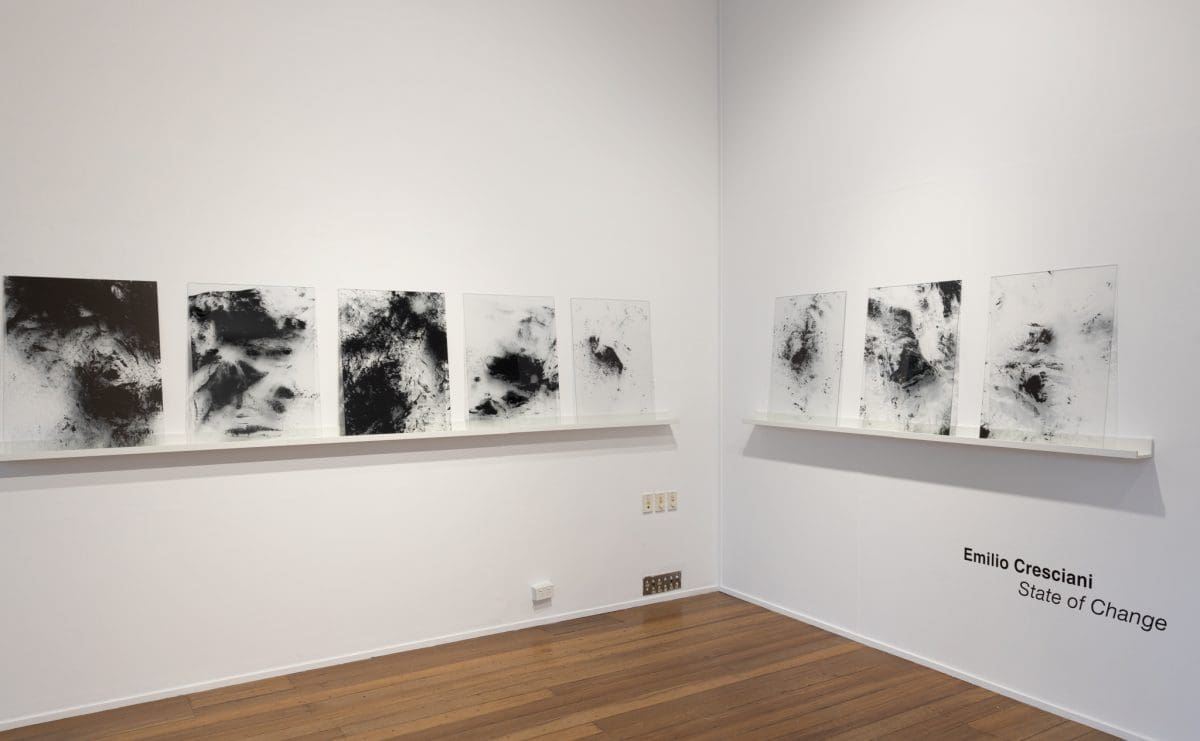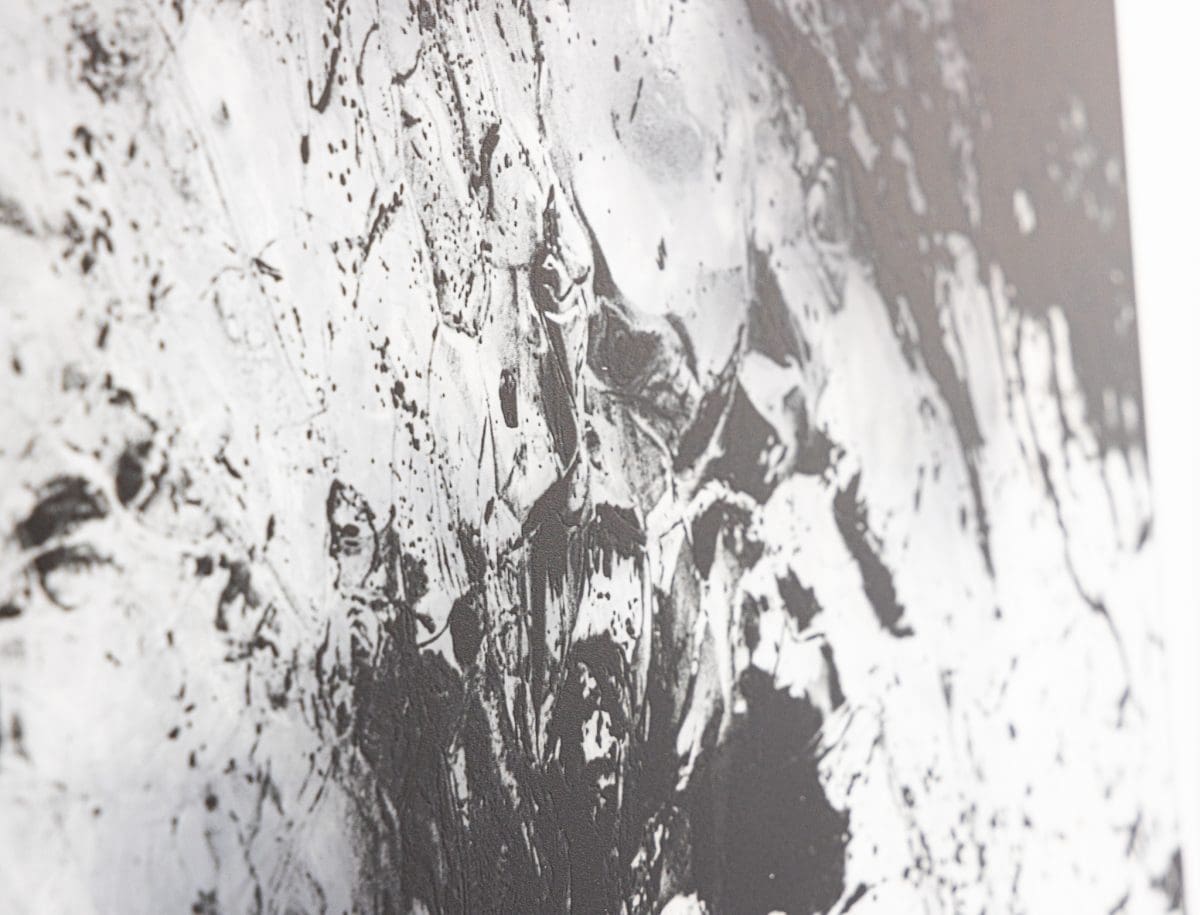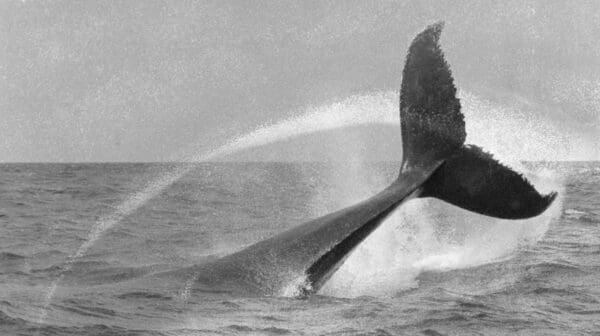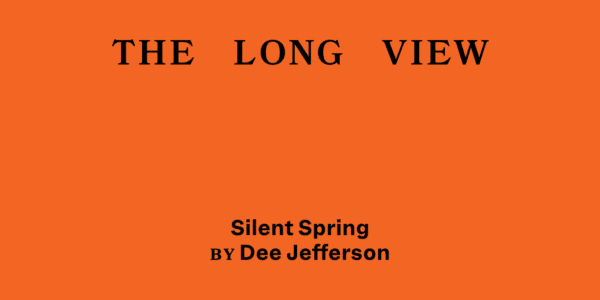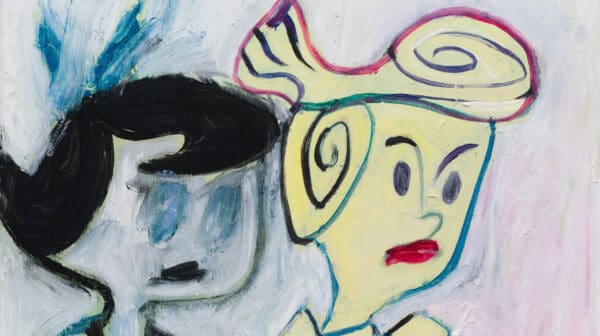Lack of political action and industry irresponsibility are high on the list of causes for the emotional and cognitive dissonance surrounding the climate crisis. Yet it is still happening and with devastating effects, which Emilio Cresciani foregrounds in State of Change at Perth Centre for Photography.
State of Change showcases more than 20 photographic works by the Sydney-based artist, documenting how varying concentrations of light transform ice into water. Cresciani’s interaction with both light and ice has produced a selection of photograms, duraclears and lightboxes. The artist associates these latter lightbox installations with the lit-up billboards displayed by multinational conglomerates like McDonald’s and 7-Eleven—connecting an industry failure to address the climate crisis. And further matters of climate catastrophe loomed over the formation of this exhibition: Cresciani began making these photographic works after the 2019-2020 Australian bushfires and during the first year of the Covid pandemic.
Cresciani’s exposure of light against ice, particularly in his photograms—an image created not with a camera, but by placing objects directly onto the surface of a light-sensitive material—echo the cycle of how melting polar ice caps increase global temperatures as more solar energy is absorbed by our planet. The photograms are a visual, albeit abstract, equivalent for melting ice. Just as a photogram cannot be repeated, neither can the formation of ice that is melting. For the artist, “when you look at the photograms, each of them forms topographical maps and they also represent the ocean and how melting ice caps contribute to rising sea levels. That’s the metaphor and reality.”
For more than 10 years Cresciani has produced work to highlight the consequences of consumerism, deforestation, and industrial and domestic waste. “My whole practice has always been around environmental issues. But this is the first time I’ve ever used ice as a process or a medium…the ice blocks have replaced the lens of a camera and it’s the ice that’s magnified and created the image,” says Cresciani.
Meanwhile Sydney-based photographer and academic Anne Ferran writes that Cresciani’s images, “invite the mind to roam. These shapes could be maps, clusters of rocky outcrops fringed by beaches, islets in a dark sea. In some [images] the chunks of ice appear to intersect, overlap. In those there is a sense of something powerfully in flux, as when sea ice breaks up or ice sheets topple into the sea.”
State of Change
Emilio Cresciani
Perth Centre for Photography
21 May—2 July




